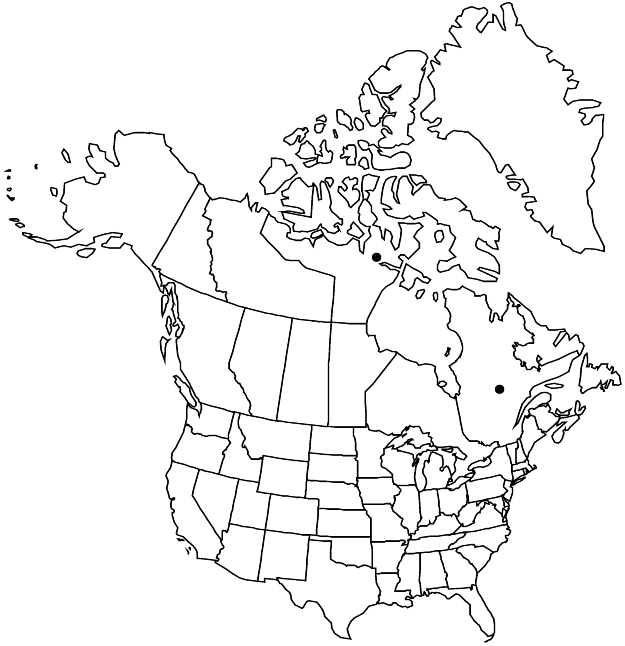Rumex subarcticus
Naturaliste Canad. 82: 191. 1955.
Plants perennial, glabrous, with vertical rootstock. Stems usually procumbent, rarely ascending, usually producing axillary shoots below 1st-order inflorescence or at proximal nodes, 30–60 cm. Leaf-blades narrowly linear-lanceolate, 6–17 × 1–3 cm, usually ca. 7–10 times as long as wide, widest near middle, usually thick, not coriaceous or subcoriaceous, base cuneate, margins entire, usually strongly undulate and/or crenulate, apex acute. Inflorescences terminal and axillary, terminal usually occupying distal 1/5–1/3 of stem, rather dense towards apex, distinctly interrupted in proximal 1/2, usually broadly paniculate (branches almost at right angles to main axis, simple or with few 2d-order branches). Pedicels articulated in proximal 1/3, filiform, 4–7 mm, not more than 2–2.5 times as long as inner tepals, articulation slightly swollen. Flowers 10–20 in whorls; inner tepals, broadly deltoid or deltoid-ovate, 3–4 × 3.2–4 (–4.5) mm, base truncate, margins entire or indistinctly crenulate, apex obtuse or subacute; tubercles absent, rarely small and indistinct. Achenes brown or dark reddish-brown, 2–3 × 1.5–2 mm. 2n = 20.
Phenology: Flowering early summer.
Habitat: Mostly coastal and alluvial habitats: sea beaches, shores of rivers and streams, wet meadows
Elevation: 0-200 m
Discussion
Some specimens of Rumex subarcticus have well-developed tubercles similar to those of R. pallidus (N. M. Sarkar 1958), to which it is closely related and of which it may be regarded as a northwestern subspecies or variety (see Á. Löve 1986).
Selected References
None.
Lower Taxa
"/2" is not declared as a valid unit of measurement for this property."+-2.5timesaslongasinnertepals" is not declared as a valid unit of measurement for this property.
